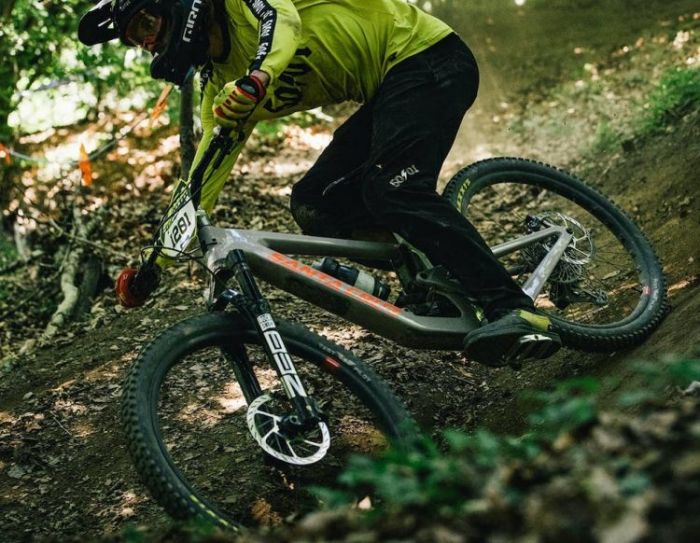Specialized Epic EVO Review
- Price: $4000
- Frame: Carbon
- Tires: Front: Specialized Ground Control, 29×2.35, Rear: Specialized Ground Control,29×2.35
- Gear: 1×12
What we like about it: The new EVO suspension on this bike is designed to work seamlessly with the Rx XC shock, providing excellent damping while retaining the Epic standard settings.
What we didn’t like about it: The actual weight of the bike is slightly heavier than anticipated.
Rating: (4.7/5)
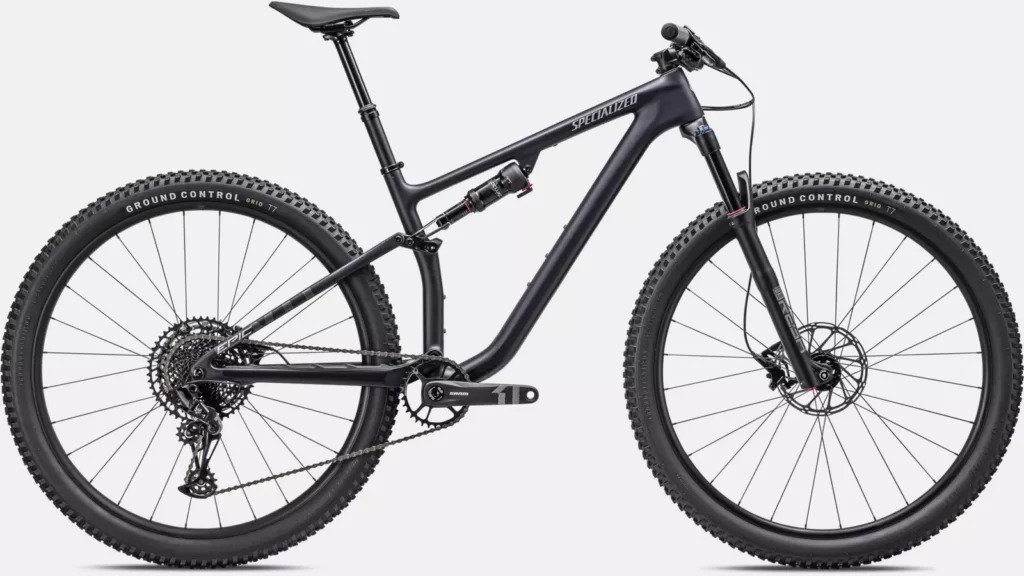
I’ve been off-roading on a hardtail bike for a while now, and even though it has front suspension, I always felt a bit uncomfortable sitting in the saddle during descents. So, I decided to give a full-suspension mountain bike a try, and that’s when I stumbled upon the Specialized Epic EVO. I’m looking forward to seeing how it performs.
In the following sections, we’ll dive into the riding experience, key features, components, specifications, and other versions of the Specialized Epic EVO. And in the latter part of this article, we’ll also compare it to several other top bike models. If you’re interested in more bike reviews, feel free to follow us.
Riding Experience
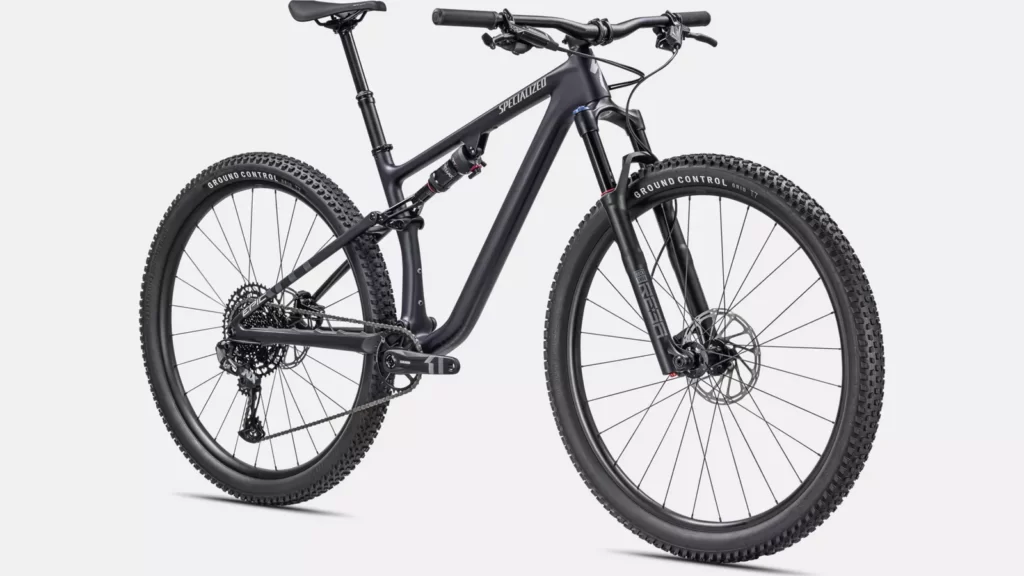
To put the Specialized Epic EVO to the test, I booked a flight and a hotel through IHG and headed to Christchurch Adventure Park.
At Christchurch Adventure Park, I chose the Captain Cook trail. It’s 546 feet long with a 98-foot elevation drop, predominantly downhill with minimal uphill sections. The descent is steep, and the trail is narrow with dry grass and protruding rocks, making it quite challenging for my ride.
Off-Road Riding
Starting from the trailhead, the Specialized Epic EVO’s new suspension system and professional components allowed me to conquer the challenges, whether it was steep climbs, exhilarating descents, or tight corners. I felt well-equipped with this bike for the off-road journey.
When climbing uphill, the SRAM NX Eagle rear derailleur played a crucial role. Its precision and smoothness allowed me to adjust to the right gear ratios based on my grade and my energy levels. I could quickly shift to lower gears to tackle steep uphill sections, maintaining an optimal pedaling cadence and steady climbing.
During descents, the bike’s 120mm front travel and 110mm rear travel absorbed bumps and vibrations effectively. I experienced a smooth and comfortable descent, without excessive jolts. On high-speed descents, I remained focused on the trail, ready to apply the SRAM Level T hydraulic disc brakes when needed to quickly decelerate or stop, ensuring my safety.
In corners, I gripped the Specialized Alloy handlebar and used body positioning to navigate turns. With my riding experience, I confidently handled every bend.
Is That All?
The Specialized Alloy handlebar on the Epic EVO is ergonomically designed, allowing me to grip it comfortably in various positions and confidently control the bike, whether on straightaways or in corners.
Additionally, the Specialized Ground Control tires performed exceptionally well. Their knob-shaped tread pattern, designed using CAD, enhanced the knob structure, providing outstanding braking and traction. The knobs’ surface offered excellent adaptability, delivering optimal grip on various terrains.
If you’re looking for a high-quality mountain bike that excels in both uphill and downhill scenarios, the Specialized Epic EVO is certainly worth considering. Its well-designed suspension, responsive components, and impressive tire performance make it a reliable choice for off-road enthusiasts.
Specifications
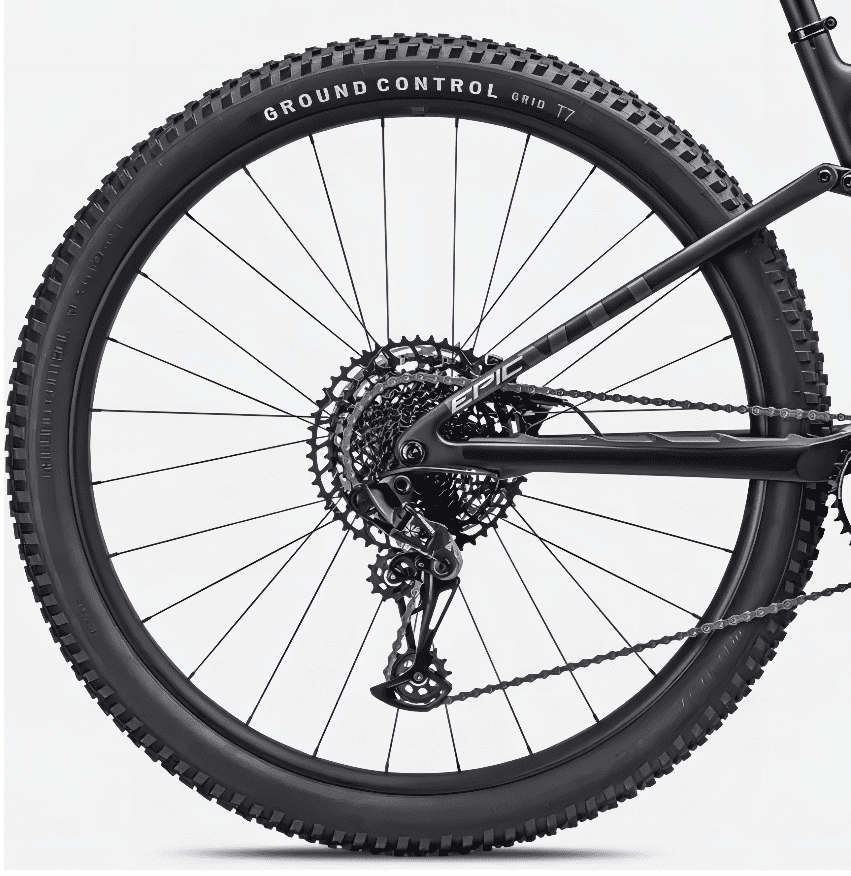
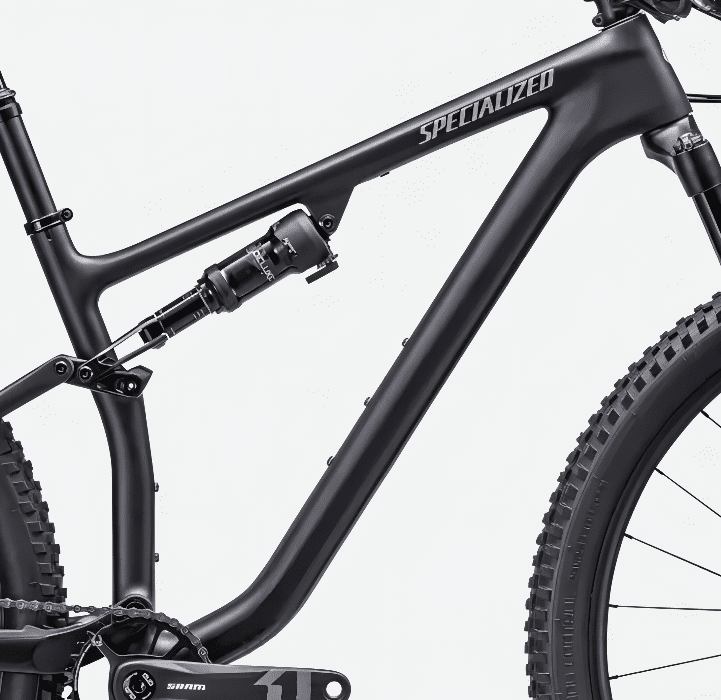
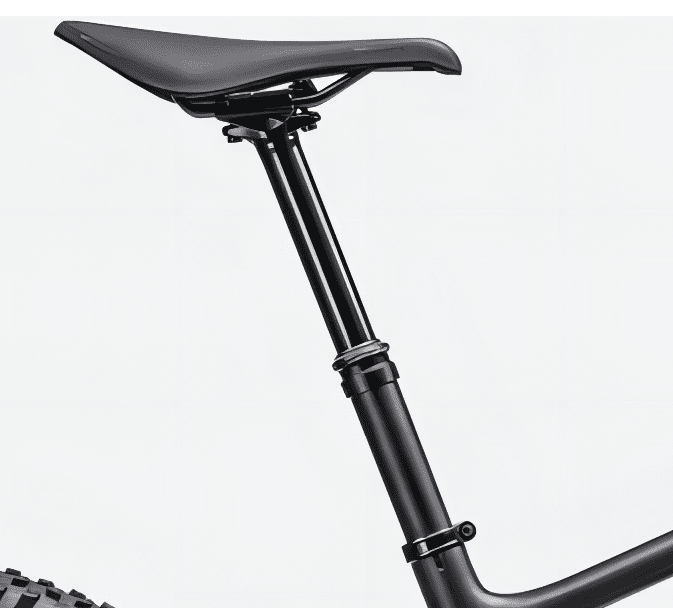
The Specialized Epic EVO is an outstanding full-suspension mountain bike. It features a FACT 11m Full Carbon frame, equipped with a RockShox Reba RL fork and a RockShox DELUXE Select+ rear shock, providing 120mm front travel and 110mm rear travel, resulting in excellent damping.
Additionally, this bike is equipped with an SRAM NX Eagle rear derailleur, delivering impressive shifting performance. The SRAM Level T hydraulic disc brakes on the Epic EVO offer excellent stopping power, ensuring rider safety. Moreover, the Epic EVO boasts a versatile and efficient progressive XC geometry.
Video
Other Versions
After extensive testing, we have gained a deeper understanding of this bike. It is a highly capable full-suspension mountain bike. However, some riders have specific performance or component requirements, leading us to investigate similar bikes further.
2023 Specialized S-Works Epic EVO RS
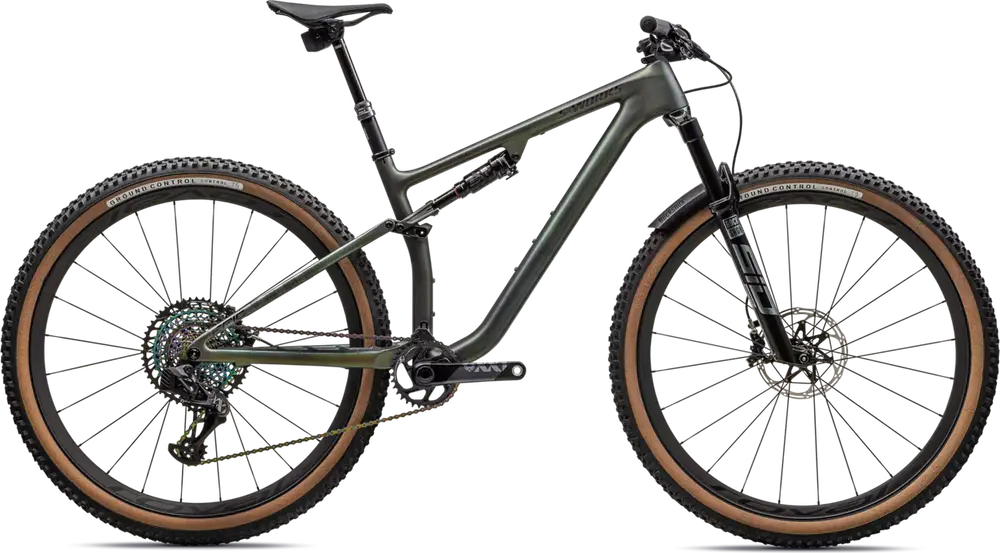
The Specialized Epic EVO comes with aluminum wheels, while the Specialized S-Works Epic EVO RS features carbon wheels, making it lightweight but more susceptible to side impacts. Additionally, the S-Works Epic EVO RS boasts a 1×12 Electronic drivetrain, whereas the Epic EVO uses a 1×12 mechanical drivetrain. Electronic shifting offers precision and low maintenance, requiring only periodic charging, but mechanical shifting can handle more rugged conditions and is more budget-friendly.
Furthermore, the Specialized S-Works Epic EVO RS can reach speeds of 28mph, whereas the Specialized Epic EVO is limited to 25mph, making it slightly slower. However, they share identical geometry. The S-Works Epic EVO RS is equipped with the SRAM XX1 Eagle AXS and X01 Eagle AXS, offering superior performance compared to the SRAM NX Eagle on the Specialized Epic EVO, albeit at a higher cost.
So, if you desire superior components, I recommend the Specialized S-Works Epic EVO RS. If you’re on a tighter budget, the more affordable Specialized Epic EVO is an excellent choice.
What do we like about it?
- The new EVO suspension complements the Epic standard settings while enhancing rear-end anti-squat characteristics, improving pedaling efficiency, and ensuring every millimeter of travel is utilized.
- SoloAir makes it easy for riders to adjust suspension performance.
- Riders can customize the bike to their preferences through the progressive XC geometry’s flip chip at the rear, allowing adjustments to the head tube angle and bottom bracket height.
- RockShox provides a Motion Control damper, delivering stable travel and exceptional damping performance.
What don’t we like about it?
- Neither of the two available colors stands out significantly, which may not meet the preferences of some riders.
FAQ
- Is this bike suitable for beginners?
Both beginners and experienced riders can enjoy this bike.
- How much does this bike weigh?
It weighs 26lbs.
- Does this bike have a flip chip?
Yes, it features a flip chip that can raise the bottom bracket by 6mm and reduce the head tube angle by 0.5° to 67°.
- How do I choose the right size?
The size chart is below:
These sizes are only general guidelines and the true fit may vary from person to person. The easiest way to find your size the best way is to try it out.
| Rider height | SIZE |
| 5’2″ – 5’8″ | SM |
| 5’6″ – 5’11” | MD |
| 5’10” – 6’3″ | LG |
| 6’1″ – 6’7″ | XL |
Specs
Build
| Frame | S-Works FACT 12m Carbon, Progressive XC Geometry, Rider-First Engineered™, threaded BB, 12x148mm rear spacing, internal cable routing, 110mm of travelBB Standard: BSA, 73mm, ThreadedHanger Standard: UDHColor: Satin Chameleon Silver Green /White Pearl Tint / Gloss Black Chrome |
| Fork | Rockshox SID ULTIMATE, Charger Race Day Damper, Debon Air, 15x110mm, 44mm offset, 120mm Travel |
| Rear Shock | RockShox SID LUXE ULTIMATE, Rx XC Tune, Two Position, Rebound Adjust, 190x40mm |
| Bottom Bracket | SRAM DUB, BSA 73mm, Threaded |
| Stem | TruVativ Descendant 35, 35mm clamp, 60mm |
| Handlebar | Roval Control SL Rise, 780mm x 35mm, 20mm rise, Carbon |
| Saddle | Body Geometry S-Works Power, carbon fiber rails, carbon fiber base |
| Seatpost | RockShox Reverb AXS, 30.9mm, S: 125, M:150, L/XL: 170mm |
Groupset
| Rear Derailleur | SRAM XX1 Eagle AXS |
| Crank | SRAM XX1 Eagle Carbon, DUB, 170/175mm, 32T, Alloy, 32T |
| Shifters | SRAM AXS Rocker Paddle |
| Cassette | SRAM XG-1299 10-52T Rainbow |
| Chain | SRAM XX1 Eagle |
| Brakes | SRAM G2 Ultimate, 4-piston caliper, hydraulic disc, 180mm rotor |
Wheels
| Rims | Roval Control SL, Carbon offset design, 29mm internal width, 4mm hook width, Tubeless ready, 24h |
| Spokes | DT Swiss Aerolite T-head |
| Front Hub | Roval Control SL, DT Swiss Internals, Ceramic Bearings, 6-bolt, 15mm thru-axle, 110mm spacing, Torque caps, 24h straight pull t-head |
| Rear Hub | Roval Control SL, DT Swiss 180 Internals, DT Swiss Ratchet EXP, Ceramic bearings, 12mm thru-axle, 148mm spacing, 24h straight-pull |
| Tires | Front: Specialized Ground Control, Control Casing, T5 Compound, 29×2.35, Rear: Specialized Ground Control, Control Casing, T5 Compound, 29×2.35 |
Comparison Table
| Bicycles | Click view | Tires | Drivetrain | Frame Material | Groupset |
| Canyon Lux World Cup CF 6 | Click View | MAXXIS Ikon Exo 2.35″ | 1 x 12 | Carbon | Shimano SLX |
| Santa Cruz BLUR R TR / Carbon C | Click View | Maxxis Rekon Race, 29 “x2.4 | 1 x 12 | Carbon | SRAM NX Eagle, Truvativ Stylo |
| Giant Anthem Advanced Pro 29 3 | Click View | Maxxis Recon Race 29×2.4 | 1 x 12 | Carbon | Shimano Deore, Praxis |
| Cannondale Scalpel Carbon 3 | Click View | (F) Schwalbe Racing Ray Performance, 29×2.25″, (R) Schwalbe Racing Ralph Performance, 29×2.25″ | 1 x 12 | Carbon | Shimano XT,SLX |
Specialized Epic EVO vs. Canyon Lux World Cup CF 6
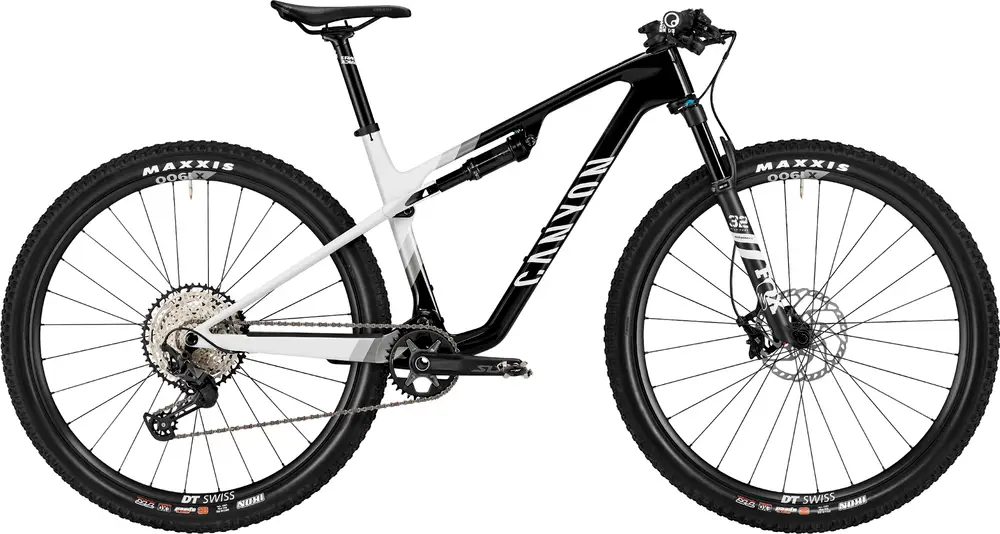
The Specialized Epic EVO features 120mm of front travel and 110mm of rear travel, providing better damping than the Canyon Lux World Cup CF 6, which has 100mm of front travel and 100mm of rear travel. However, the Canyon Lux World Cup CF 6 can reach 29mph, which is slightly faster than the Specialized Epic EVO’s 25mph top speed.
Additionally, the Specialized Epic EVO has a stack/reach ratio of 1.37, compared to the Canyon Lux World Cup CF 6’s 1.29 stack/reach ratio. A higher stack/reach ratio offers better reach, making the ride more comfortable for the cyclist.
So, if you’re seeking a more comfortable ride, I would recommend the Specialized Epic EVO. If you’re on a tighter budget, the more affordable Canyon Lux World Cup CF 6 would be a great choice.
Learn More: Is Canyon Lux Trail CF 7 Worth Buying? [2022 Canyon Lux Trail CF 7 Review]
Specialized Epic EVO vs. Santa Cruz BLUR R TR / Carbon C
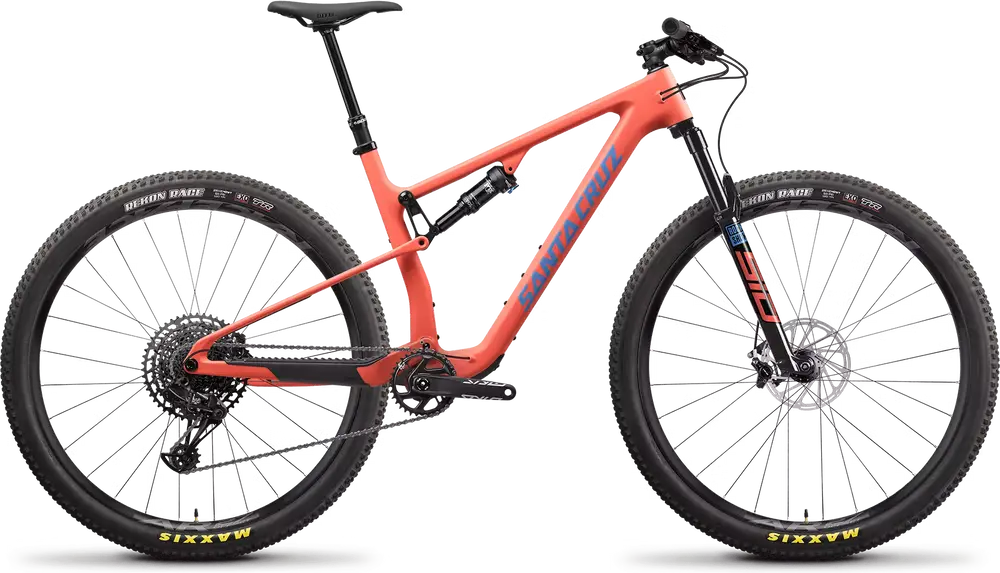
The Specialized Epic EVO is equipped with a RockShox Reba fork, while the Santa Cruz BLUR R TR / Carbon C uses a RockShox SID. The Reba offers a wider range of wheel size options and can accommodate wider tires compared to the SID. Additionally, the Reba is known for its durability, but the SID comes at a higher price point while being lighter in weight.
Furthermore, the Specialized Epic EVO features 120mm of front travel and 110mm of rear travel, whereas the Santa Cruz BLUR R TR / Carbon C has 120mm of front travel and 115mm of rear travel, providing stronger damping. In summary, if you seek superior damping performance, the Santa Cruz BLUR R TR / Carbon C is an excellent choice. If you prioritize compatibility with the RockShox Reba and versatility, the Specialized Epic EVO can meet your needs.
Learn More: Is Santa Cruz BLUR X01 Worth Buying? [2022 Santa Cruz BLUR X01 Review]
Specialized Epic EVO vs. Giant Anthem Advanced Pro 29 3

The Giant Anthem Advanced Pro 29 3 features carbon wheels, while the Specialized Epic EVO comes with aluminum wheels. Carbon wheels are lightweight but are susceptible to breaking when subjected to side impacts. Additionally, the Giant Anthem Advanced Pro 29 3 can reach speeds of 28mph, whereas the Specialized Epic EVO has a top speed of 25mph.
Furthermore, the Specialized Epic EVO offers 120mm of front travel and 110mm of rear travel, providing stronger damping compared to the Giant Anthem Advanced Pro 29 3, which has 110mm of front travel and 100mm of rear travel. Moreover, in terms of the stack/reach ratio, the Specialized Epic EVO (1.33) has a slightly larger ratio than the Giant Anthem Advanced Pro 29 3 (1.28), resulting in a more comfortable ride.
So, if you desire superior damping performance and a more comfortable ride, the Specialized Epic EVO is well-suited to your needs. If you prioritize lighter carbon wheels, I would recommend the Giant Anthem Advanced Pro 29 3.
Specialized Epic EVO vs. Cannondale Scalpel Carbon 3

The Specialized Epic EVO offers stronger damping with its 120mm of front travel, 110mm of rear travel, and a dropper seatpost. On the other hand, the Cannondale Scalpel Carbon 3 comes with a rigid seatpost. The dropper seatpost allows riders to lower the seat height when standing, preventing leg interference with the seat.
Furthermore, the Cannondale Scalpel Carbon 3 can reach speeds of 29mph, while the Epic EVO has a top speed of only 25mph. However, the Specialized Epic EVO is equipped with Cannondale XC Silicone grips, providing convenience to riders without the need to spend extra time purchasing suitable grips.
In summary, if you’re looking for greater speed, I would recommend the Cannondale Scalpel Carbon 3. If you prioritize superior damping performance, the Specialized Epic EVO is the better choice.
Learn More: Is Cannondale Scalpel HT Carbon 3 A Good Bike? [2022 Cannondale Scalpel HT Carbon 3 Review]
Summary
Above is our review of the Specialized Epic EVO. It is an excellent full-suspension mountain bike that offers a comfortable off-road riding experience. Overall, we have given it a high rating of 4.7. If you’d like to access more bicycle-related information, please check out our other reviews.
Lastly, if you enjoyed our content, feel free to share it with your friends. If our content has been helpful to you, you can click on the email subscription button below. Thank you for your support!

![[Orbea URRUN 10 20mph Review] – Best Used By People Who Enjoy Riding To Get AFeel For The Mountains!](https://bestbikeselect.com/wp-content/uploads/2023/09/2023-Orbea-URRUN-10-20mph-35_-1024x1024.jpg)
![[Specialized Turbo Como 5.0 Review] – Good Choice?](https://bestbikeselect.com/wp-content/uploads/2023/08/2023-Specialized-Turbo-Como-5.01_-1024x1024.webp)
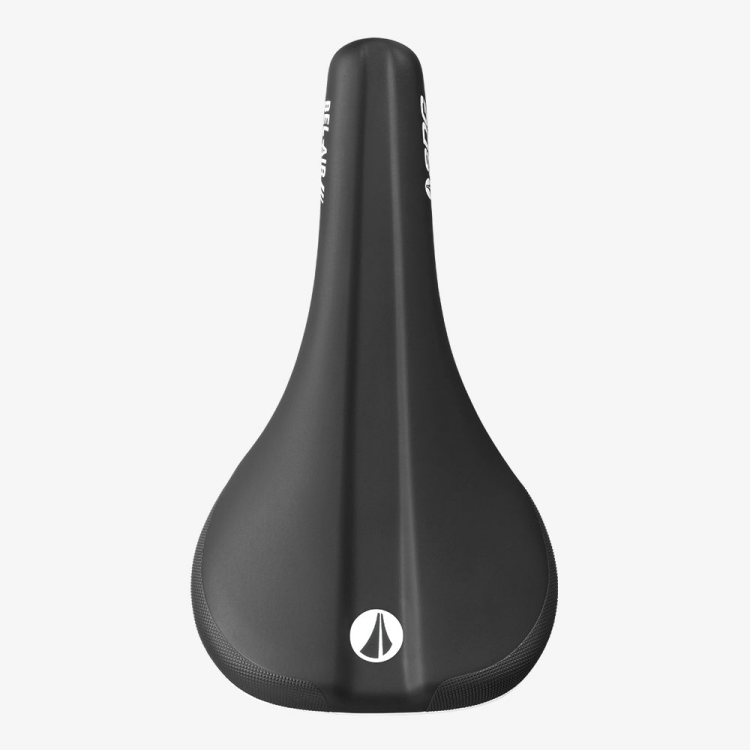
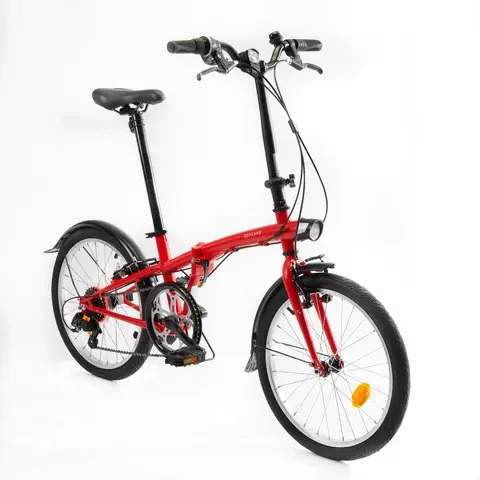

![2025 Built for Champions:[Orbea ORCA M21eTEAM PWR Review]](https://bestbikeselect.com/wp-content/uploads/2025/01/ORCA-M21eTEAM-PWR-1024x885.jpg)
![2025 Conquer Any Trail [Santa Cruz Bronson R Review]](https://bestbikeselect.com/wp-content/uploads/2025/01/Santa-Cruz-Bronson-R-1-1024x768.webp)
![2025 The All-Terrain Beast [Santa Cruz Hightower 3 MY24 Review]](https://bestbikeselect.com/wp-content/uploads/2025/01/Santa-Cruz-Hightower-3-MY24-1024x768.webp)
![The Best Comfortable Leisure Bike of 2025 [ Trek Verve 2 Lowstep Gen 5 ]](https://bestbikeselect.com/wp-content/uploads/2024/12/Verve-2-Lowstep-Gen-5-02-1024x681.png)
![2025’s Top Endurance Bikes [Cannondale Synapse Carbon 3 L Review]](https://bestbikeselect.com/wp-content/uploads/2025/01/Cannondale-Synapse-Carbon-3-L-1-1024x627.webp)
